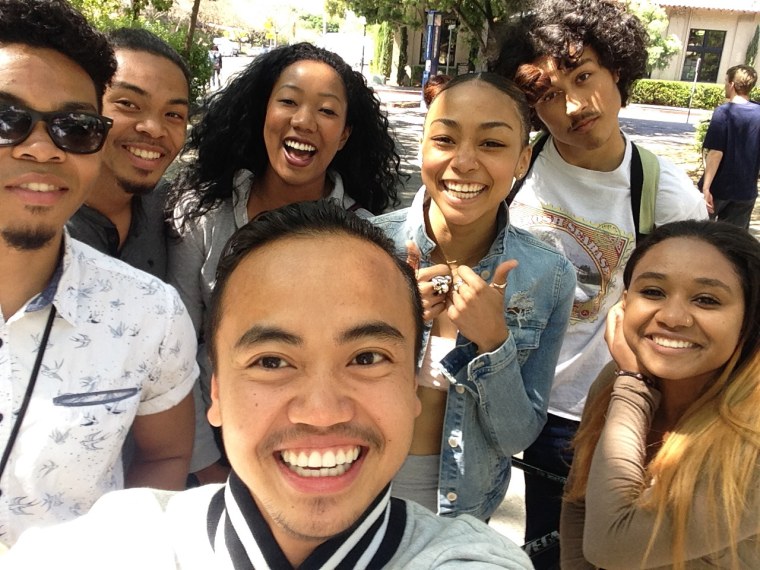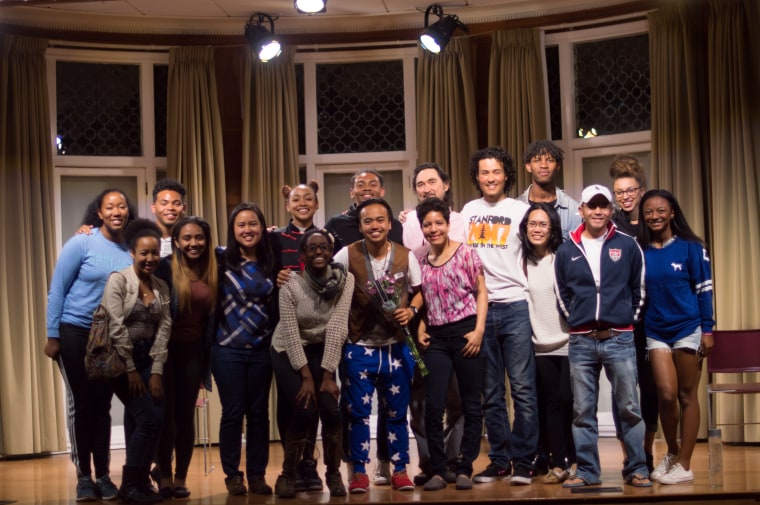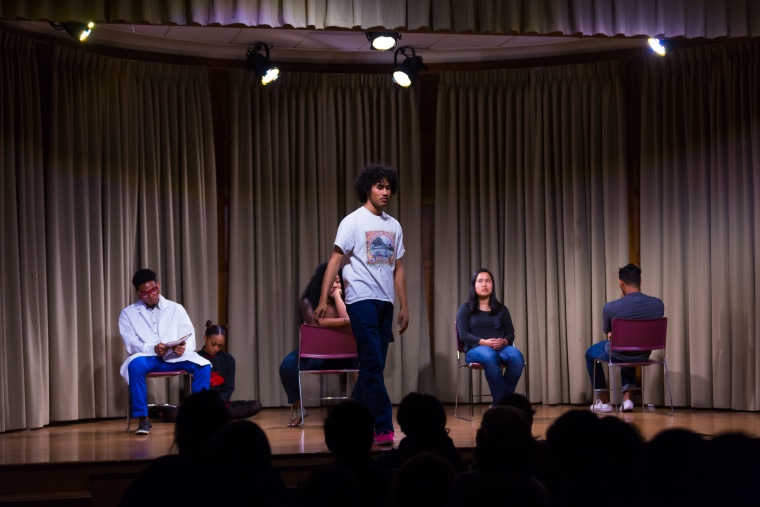In the trailer for Omnes Senmo’s new video project, individuals of mixed Asian and black races pose questions directly to the viewer. To a backing track, one voice asks, “can my features and my dialect tell you if I’m enough of anything?”
The intersection of black and Asian identity is the focus of “Blasian Narratives: Volume 1.” Through a series of 15 short videos, the project will explore the simultaneous tension and solidarity between Asian and black communities, using the voice of “Blasian” individuals who sit in the middle of the often polarized communities, Senmo said.
The project was originally conceived by Senmo, also known as Canon Em, a Cambodian American who went to university at the historically black Morehouse College. Senmo, who came to America as a refugee, grew up in a community that was primarily black and Latino, he said.
It wasn't until later that he realized there was “a connotation that Asian and black people don’t get along,” he told NBC News. Interested in finding a “more meaningful experience of solidarity,” he transferred to Morehouse, where he was one of two Asian students in his graduating class. While he came in “as an outsider,” he was grappling with his own questions of cultural identity — which led him to find camaraderie with "Blasian" individuals at Morehouse.
RELATED: Diving Into Race, Identity of Multiracial Families In ‘Raising Mixed Race’
One of these students was Julian Booker, who grew up in Hawaii. While Booker said race was not an issue in Hawaii because most people were mixed-race, he said it became an issue at Morehouse. As an individual with Japanese and black roots, Booker noticed that he and his brother “stuck out like sore thumbs,” he said. Booker had primarily identified as African-American in middle school, since the rest of his schoolmates were Asian. He embraced his Blasian identity in high school, so at Morehouse he never felt like he had to “compensate for [his] blackness,” he said, though he heard comments about his “exotic attractiveness.”

Students like Booker had narratives that intrigued Senmo, and the two became friends when Senmo introduced himself walking to class. As Senmo continued to befriend Blasian classmates at the Atlanta University Center, he eventually organized a Blasian mixer at his apartment, where the community grew closer. Eventually, Senmo led the charge for a theater performance in which Blasian students could talk about their experiences with identity.
Describing the theater production as a structured series of stories like “The Vagina Monologues,” Senmo uses the performers’ originally written words and narratives throughout the performance. The stories overlap in constructed ways, creating a traditional three-piece play. Positive reviews and interest in the play led to an additional performance at Stanford, where three additional cast members joined the project, Senmo said.
“Thoughtful, personal narratives — we can’t have enough of that.”
Janei Maynard, a self-described “Blackipina,” joined the project after the Stanford performance, she told NBC News. Inspired by the mission of the project, Maynard wanted to tell her story with a group who understood the “third part” of her ethnic identity — and she said she learned something new from their different but similar experiences.
While Maynard majored in comparative studies in race and ethnicity, she finds it very hard to distill her experience to a singular response. Maynard said that, in college, she often did not align with the broader Asian community.
"Back home, I was surrounded by a community of low-income Asians, which does have a very different culture than affluent Asian communities, so the Asian community at school didn't feel comforting or familiar at school," she said.
The questions she had about her identity led her to fly to Georgia and help film the project, she said.

Experiences like Maynard’s make Senmo curious, as he strives to figure out why Asian and black communities tend to “not get along.” Currently, he believes that there’s a “crab in a barrel mentality” and that in the quest to become accepted in society, there’s a notion that Asian people know they’ll “never become white — but at least they’re not black.” Senmo said that this viewpoint is destructive and that “people don’t often think about why the crabs end up in the bucket in the first place.”
Senmo hopes to grapple with these questions and many others in "Blasian Narratives: Volume 1." The project is slated for release in Fall 2016, but Senmo is already cautiously optimistic for a volume 2.
"This whole thing has been grassroots, we make this day by day, just a matter of execution and the right hands and the right guys," Senmo said. "Volume 2 — right now, no immediate plans, just trying to get this up first."
The project has been largely self-funded, Senmo said, and the priority for the project is community outreach — Senmo wants to get the project into schools across the country.
If Volume 1 goes well, Volume 2 will have “more of a production” and “might even have its own soundtrack,” Senmo said. The narratives featured might extend past Blasian and incorporate more levels of intersectionality. “Thoughtful, personal narratives — we can’t have enough of that,” Senmo said.
Follow NBC Asian America on Facebook, Twitter, Instagram, and Tumblr.
